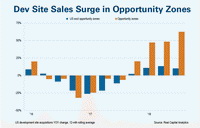(WASHINGTON, D.C.) — At The Real Estate Roundtable’s Annual Meeting on June 14-15, members approved the organization’s leadership for their fiscal year beginning July 1, 2016.
William C. Rudin (Rudin Management Company, Inc.) was elected to his second year as the organization’s chairman. Joining him on the Board of Directors, as of July 1, are:
- Brian Harnetiaux, Senior Vice President of Asset Management, McCarthy Cook & Co.
Chair and Chief Elected Officer, Building Owners & Managers Association (BOMA) International - Elizabeth I. Holland, CEO/General Counsel, Abbell Associates
Chairman, International Council of Shopping Centers - Jodie W. McLean, CEO, EDENS
- Stephen P. Weisz, President and CEO, Marriot Vacations Worldwide Corporation
Chairman of the Board, American Resort Development Association.
Stepping down from the Roundtable board are:
- Stephen D. Lebovitz, President and CEO, CBL & Associates Properties, Inc.
Immediate Past Chairman, International Council of Shopping Centers - George M. Marcus, Chairman, Marcus & Millichap Company.
The full board list and committee leadership for FY 2017 can be found online at www.rer.org.
For FY 2017, The Roundtable has added a Membership Committee to continue its efforts to maintain a balanced and diverse membership, co-chaired by Jeffrey B. Citrin (Managing Principal, Square Mile Capital Management LLC), and Anthony J. LoPinto (Global Sector Leader, Real Estate, Korn Ferry).
The Sustainability Policy Advisory Committee (SPAC) will continue to be led by Anthony E. Malkin (Chairman & CEO, Empire State Realty Trust), and Joyce S. Mihalik (Vice President, Design Services, Forest City Realty Trust) will serve as the new vice chair.
The Real Estate Capital Policy Advisory Committee (RECPAC) will be co-chaired by Dennis Lopez (Global Chief Investment Officer, AXA Real Estate Investment Managers), Mark Myers (Executive Vice President, Wells Fargo), and Diana Reid (Executive Vice President, PNC Bank) will serve as vice chair.
As for the Tax Policy Advisory Committee (TPAC), Frank G. Creamer, Jr. (Senior Advisor, Trimont Real Estate Advisors) will remain chair, and Jeffrey S. Clark (Senior Vice President, Global Tax and JV Accounting, Host Hotels & Resorts Inc.) will serve as vice chair.
The Homeland Security Task Force (HSTF) leadership remains the same, with co-chairs Joseph Billy Jr. (Vice President/Global Security, Prudential), and J. Christopher Woiwode (Vice President, Security, Macerich).
Roundtable Chairman William C. Rudin acknowledged the contributions of outgoing board members and our policy advisory committee leaders. “Thanks to the dedication, knowledge, and the leadership of our outgoing board and committee leaders, The Roundtable this past year made tremendous strides in all areas of our policy issues; the 6–year extension of the Terrorism Risk Insurance Act (TRIA), congressional authorization for the voluntary “Tenant Star” program, significant reforms of the Foreign Investment in Real Property Tax Act (FIRPTA), critical improvements to legislation affecting how large and small partnerships are audited for tax purposes, and efforts to reinvigorated the debate over how to authorize the collection of taxes owed for online purchases and goods.”
“We look forward to the new leadership’s valuable insights, along with years of industry experience, as we continue to work with our 17 national trade association partners to jointly address key national policy issues relating to real estate and the overall economy.” added Rudin.
“The Roundtable had a terrific year, raising the industry profile in positive and substantive ways, and adding value to policy issue discussion throughout Washington. The industry leaders on our board of directors took our well-informed, fact-based organization to a new level of thoughtful analysis of policy proposals. Throughout the year we quickly responded to policy challenges and we proactively advanced our perspective on important issues,” said Roundtable President and CEO, Jeffrey D. DeBoer.






